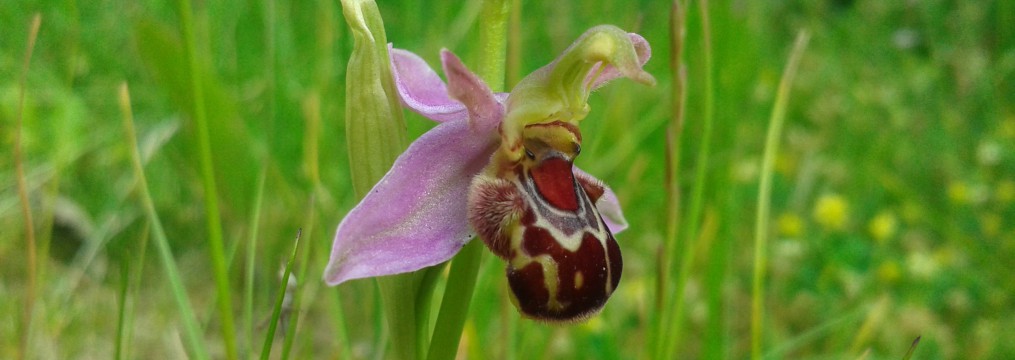
Wildlife is everywhere, there is no need to visit nature hotspots to find it. As I have always enjoyed searching forgotten corners in everyday urban habitats to see what is lurking, this week I have explored the species that live on a single species of plant – creeping thistle.

The large community of animals associated with oak trees is well described. It is less well known that a community of animals are also dependant on herbaceous plants such as thistles. A variety of species cause galls, swellings of the plant where the larvae live and feed. Each species is usually specific to a single plant species. This gall fly (Tephritidae) is one of the species that causes galls on creeping thistle.

The larvae of other species feed on specific plants but don’t cause galls. This small beetle with an elongated head (seed weevil) is one of these, with different species that look very similar living on different plants.

As well as species that rely on thistles as food sources for their young, there are also species that are not specialised to thistles but do enjoy drinking their sap or nectar as adults. Several species of true bug (Homoptera) can be found on thistle, including aphids and this common froghopper that will feed in a similar way with its stabbing mouthparts.

As thistles are prominent in the plant community, they will also be used as a general gathering place. Red soldier beetles are particularly common at the moment, using the flower heads for their orgy.
The humble thistle is host to a whole community that can be discovered wherever these ‘weeds’ are found, all I need to do is search.
Species added this week: #29 Dune chafer (Anomala dubia). #30 Gall fly (Tephritidae). #31 Narrow-bordered five-spot Burnet (Zygaena lonicerae). #32 Seed weevil (Apionidae). #33 Common froghopper (Philaenus spumarius). #34 Broad-leaved helleborine (Epipactis helleborine). #35 Crab spider (Thomisidae). #36 Red soldier beetle (Rhagonycha fulca).
1000 species challenge. One species seen and photographed, alive, in the wild, in Britain each day.





